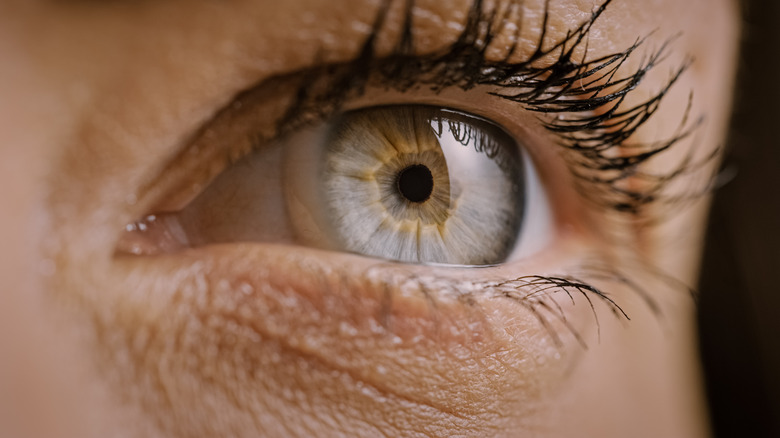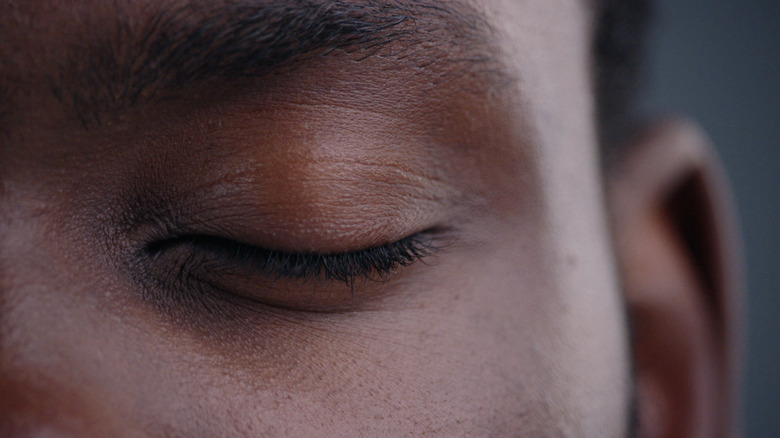Is It Bad If You Don't Blink Enough?
Although it takes only a fraction of a second, blinking occupies roughly 10% of our waking hours, reports Healthline. On average, adults blink as many as 20 times per minute. If that number sounds small to you, consider how that adds up to over 7 million blinks a year. However, experts at Vision Source tell us that our number of blinks per minute significantly drops when our eyes are attentively focused on something else, particularly screens. When our eyes are turned towards the television, computer screen, or a book, we tend to blink only a mere three to eight times per minute.
While most of us rarely give blinking a second thought, this small bodily response carries a lot of responsibility. Blinking not only keeps our eyes lubricated, but it also keeps them free of debris, reduces dry eyes, and carries much-needed oxygen and nutrients to the eyes (via Healthline). In addition, the Advanced Vision Institute notes that blinking also reduces our chances of infection and brightens the visual information received by the retina.
Seeing as blinking is so critical to the health of our vision, is it harmful if we're not blinking enough throughout the day?
Try this blinking exercise
If we aren't blinking enough on a regular basis, we reduce our nutrient supply to the eyes (per Healthline). You may also increase your risk for dry eyes. Eyes that aren't adequately moist can cause painful or blurry vision. Additionally, the reduced supply of oxygen we experience when we blink less often can make us more susceptible to eye infections, since contaminants are also more likely to make their way into the eye. If we were to stop blinking altogether, the cutoff of oxygen could cause the cornea to swell.
Just like most habits, however, you can train yourself to blink more frequently. Experts at Advanced Vision Institute suggest implementing some 60-second power-blinking sessions throughout your day. During these sessions, try to blink 50 times within one minute while moving your gaze up, down, left, and right. You'll want to make sure you're getting in a full blink each time, not just a partial closure. Just be mindful not to squeeze your eyes tightly shut. Those who work on computers, in particular, may notice an improvement when it comes to eye strain and eye fatigue.
If you notice a change in how often you're blinking along with symptoms such as redness, pain, light sensitivity, discharge, swelling, blurred vision, or issues with balance or muscle spasms, Healthline suggests consulting with your physician, as these can be signs of possible eye infection or an underlying health condition.


